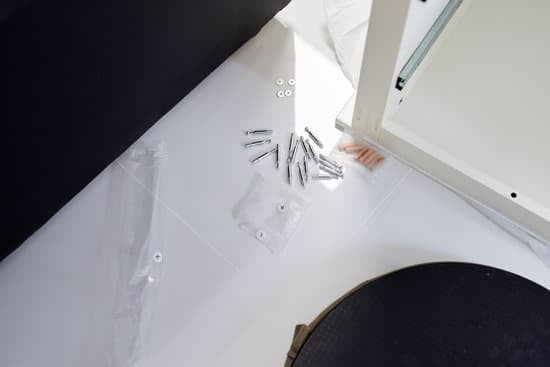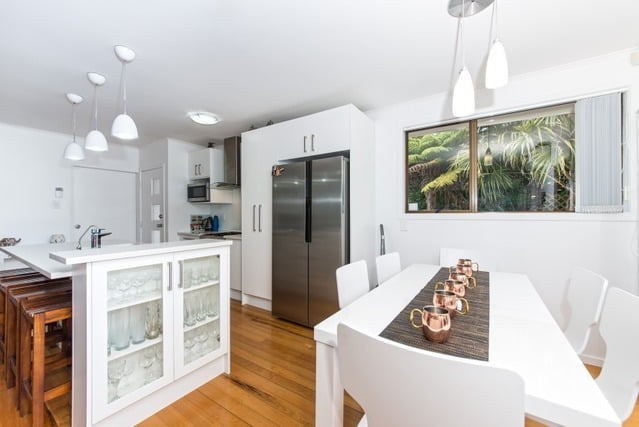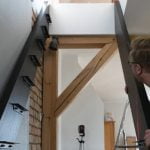Home is where the heart is, and it’s no wonder that homeowners are always looking for ways to improve their living spaces. Whether it’s to enhance the overall value of their property or simply create a more aesthetically pleasing environment, home improvements play a vital role in transforming houses into homes. However, many people shy away from embarking on these projects due to budget constraints.
The good news is that making inexpensive home improvements is not only possible but also highly rewarding. In this article, we will explore various strategies and creative ideas to help you beautify your space without breaking the bank.
When it comes to home improvements, there are countless benefits that go beyond just making your home look better. Enhancing the value of your property can lead to a higher resale price down the line, while creating an inviting atmosphere can greatly enhance your quality of life. Despite these advantages, many individuals hesitate to embark on improvement projects due to financial limitations. However, with careful planning and smart decision-making, you can make significant changes within your budget.
Setting a budget is crucial before diving into any home improvement project. It helps you evaluate your financial boundaries and establish realistic expectations for what can be achieved within your means. By prioritizing areas that require immediate attention and have the most impact on your home’s overall value, you can efficiently allocate resources and ensure the best return on investment.
In this article, we will provide tips for setting a budget as well as discuss whether Do-It-Yourself (DIY) projects or hiring professionals are more suitable for different types of improvements. We will explore how repurposing existing items and revamping them creatively can give your space a fresh new look without draining your wallet.
Additionally, we will dive into topics such as painting magic to transform your space with color and illuminating your home on a budget through effective lighting solutions.
With these strategies in mind, you’ll be inspired to embark on affordable home improvement projects that will breathe new life into your space. Don’t let budget constraints hold you back – there are plenty of options available for achieving beautiful results without breaking the bank. Let’s get started on transforming your home into a place you love coming back to every day.
Set a Budget
Setting a budget is a crucial step when it comes to making inexpensive home improvements. It allows you to determine your financial boundaries and make realistic decisions about which projects to prioritize. By evaluating your financial situation, you can allocate funds to areas that require immediate attention and have the most impact on the overall value of your home.
Before diving into any home improvement project, take the time to assess your finances. Calculate how much disposable income you have available for improvements and consider any existing debts or financial obligations. It’s important to be realistic about what you can afford and avoid overspending.
Once you have a clear understanding of your financial situation, prioritize the areas of your home that need attention the most. For example, if your roof is leaking or your plumbing is outdated, addressing these issues should be at the top of your list. These types of improvements not only enhance the functionality of your home but also maintain or increase its value.
To assist in determining your financial boundaries and prioritizing projects, it may be helpful to create a spreadsheet or use a budgeting app. This allows you to track expenses related to each improvement as they arise and helps prevent overspending.
In order to set a realistic budget for home improvements, consider gathering quotes from professionals and researching average costs for materials and supplies. This will give you an idea of how much money you will need for each project and allow you to adjust your budget accordingly.
| Home Improvement Project | Projected Cost |
|---|---|
| Kitchen Renovation | $5,000-$10,000 |
| Bathroom Remodel | $3,000-$7,000 |
| Landscaping | $500-$2,000 |
| Painting Interior | $200-$800 |
| Flooring Upgrades | $1,000-$5,000 |
DIY or Hiring Professionals
Advantages of DIY
Undertaking home improvement projects yourself can be a rewarding and cost-effective option. There are several advantages to choosing the DIY route:
- Cost Savings: One of the most significant advantages of DIY is the potential for cost savings. By eliminating labor costs, you can allocate your budget towards materials and tools, allowing you to achieve more within your financial boundaries.
- Flexibility and Control: When you take on a project yourself, you have full control over every aspect, from planning to execution. You can tailor the project to your specific preferences, work at your own pace, and make adjustments along the way.
Disadvantages of DIY
While there are benefits to handling home improvement projects yourself, there are also some drawbacks that should be considered:
- Time Commitment: DIY projects often require a significant time investment. Depending on the complexity of the task and your skill level, it may take longer to complete compared to hiring professionals. Additionally, if you have limited free time or other commitments, this may not be a feasible option.
- Skill Level and Expertise: Some projects require specialized skills and knowledge that professionals possess. If you lack experience in certain areas or tools required for a specific project, it might be best to leave it in the hands of professionals who can ensure quality workmanship.
Projects Suitable for DIY
While there are limits to what can be accomplished by amateurs, many home improvement tasks are well-suited for DIY enthusiasts with basic skills and tools:
- Painting: Painting walls, cabinets, or furniture is an excellent DIY project that can make a significant impact on the overall aesthetics of your home while staying within budget.
- Installing Flooring: Simple flooring options like laminate or vinyl plank installation can often be done by homeowners with proper research and preparation.
- Basic Plumbing or Electrical Work: Minor plumbing repairs, such as fixing leaks or replacing faucets, and simple electrical tasks like replacing light fixtures can typically be handled by DIYers.
- Installing Shelving or Storage Systems: Adding shelves or organizing systems to improve storage and organization is a manageable project for most DIY enthusiasts.
By considering your skill level, available time, and budget constraints, you can weigh the advantages and disadvantages of DIY versus hiring professionals when it comes to different home improvement projects. Remember that safety should always be a top priority when deciding whether to tackle a project yourself or hire professional help.
Repurpose and Upcycle
In the quest for making inexpensive home improvements, one of the most cost-effective and creative approaches is to repurpose and upcycle existing furniture and accessories. This not only helps you save money but also adds a unique touch to your living space. By breathing new life into old items, you can give your home a fresh look without spending a fortune. Here are some innovative ideas and tips to get you started:
Repurposing Ideas
Repurposing involves taking an item that may no longer serve its original purpose and finding a new use for it. There are countless possibilities when it comes to repurposing, limited only by your imagination. For example, an old ladder can be transformed into a stylish shelving unit by adding sturdy boards across the rungs. This not only provides additional storage space but also adds character to any room.
Similarly, vintage pieces such as dressers or chests can be given a modern twist with some paint and updated hardware. By sanding down the surface, applying a fresh coat of paint in your desired color, and replacing old drawer pulls with sleek handles, you can transform these dated pieces into stylish focal points.
Upcycling Tips
Upcycling involves taking existing items and creatively modifying or enhancing them to give them new life. This approach allows you to incorporate personal style into your home while reducing waste. One popular upcycling trend is using mason jars as versatile decor elements. They can be transformed into candle holders, storage containers for small items like office supplies or utensils, or even made into charming hanging lanterns.
Another fun upcycling idea is transforming old window frames into statement pieces of wall art. Simply remove any glass panes from the frame if they’re missing or damaged, give it a fresh coat of paint or stain, and hang it on the wall. You can leave it empty for a minimalist look or create a gallery-style display by attaching small photos or artwork to the back.
Budget-Friendly Transformations
When repurposing or upcycling, keep in mind that you don’t have to spend a lot of money on materials. Look around your home for items you already have that can be transformed, such as fabric remnants, leftover paint, or unused glass jars. Thrift stores and yard sales are also great places to find inexpensive pieces that can be given new life.
In addition to saving money, repurposing and upcycling allows you to bring a personal touch to your home decor. By thinking outside the box and getting creative with what you already have, you can revamp your space while staying within your budget.
By utilizing these repurposing and upcycling ideas, you can breathe new life into old items and give your home a fresh and unique look without spending a fortune. Whether it’s transforming an old ladder into shelving or upcycling mason jars into charming lanterns, these budget-friendly options allow you to be both eco-friendly and stylish. So start exploring your creativity today and see how even the smallest changes can make a big impact on your space.
Paint Magic
When it comes to making inexpensive home improvements, one of the most impactful and cost-effective ways to transform your space is through the power of paint. The colors you choose can completely change the look and feel of a room, giving it a fresh and updated vibe without breaking the bank.
Choosing the right colors for your home can be a daunting task, but with a little guidance, you can achieve professional-looking results on a budget. When selecting paint colors, consider the mood you want to create in each room. Cool blues and greens are known for their calming effect, while warm yellows and oranges can create a cozy and inviting atmosphere.
In addition to choosing the right colors, utilizing accent walls can add depth and interest to your space without requiring a huge investment. By painting just one wall in a bold or contrasting color, you can make a statement and draw attention to specific features or architectural details within the room.
Executing a successful paint job also requires some preparation and technique. To save money on brushes and rollers, consider borrowing or renting these items instead of purchasing them outright. Properly preparing surfaces by cleaning and filling any holes or cracks is essential for achieving smooth results. Applying two coats of paint is typically recommended for even coverage, but if you’re working with limited resources, focus on ensuring one quality coat rather than spreading yourself too thin.
| Room | Before | After |
|---|---|---|
| Living Room |  |  |
| Kitchen |  |  |
| Bedroom |  |  |
As you can see, a simple change in color can make a dramatic difference in the overall appearance of a room. By embracing the magic of paint, you can easily and affordably give your space a whole new look and feel.
Lighting Matters
Lighting is a crucial aspect of home improvement that often gets overlooked. However, it has the power to transform the atmosphere and create a welcoming ambiance in your home. In this section, we will explore how to illuminate your home on a budget, offering affordable lighting solutions that will enhance your space without breaking the bank.
- Utilize Natural Light: One of the most cost-effective ways to illuminate your home is by maximizing natural light. Keep curtains and blinds open during the day to let sunlight flood in. Use mirrors strategically to reflect natural light and make rooms appear brighter and more spacious.
- Invest in Energy-Efficient Bulbs: Traditional incandescent bulbs consume a lot of energy and can quickly become costly. Switching to energy-efficient LED or CFL bulbs not only reduces electricity bills but also extends their lifespan, saving you money in the long run.
- Incorporate DIY Lighting Projects: Get creative and make your own unique lighting fixtures using inexpensive materials. For example, repurpose mason jars into pendant lights by inserting battery-operated LED string lights inside them. Alternatively, use fairy lights to create a cozy atmosphere by draping them around curtain rods or framing them along shelves.
- Experiment with Layered Lighting: Layering different types of lighting in a room can create depth and enhance its overall appeal while offering flexibility for various moods and activities. Consider combining overhead lighting with table lamps, floor lamps, or wall sconces to achieve layered lighting effects without spending excessive amounts.
- Opt for Dimmers: Installing dimmer switches allows you to adjust the intensity of lighting according to your preference or desired ambiance. This simple upgrade adds an element of sophistication while giving you control over the mood in any room.
By implementing these affordable lighting ideas, you can effortlessly elevate the look and feel of your home without straining your budget. Remember that effective lighting not only brightens up spaces but also sets the tone and creates a comfortable and inviting environment.
Curb Appeal
Enhancing the curb appeal of your home’s exterior not only creates a welcoming first impression for visitors, but it also increases the overall value of your property. Many homeowners may be hesitant to invest in improving their home’s exterior due to budget constraints. However, there are several budget-friendly ideas that can greatly enhance the curb appeal without breaking the bank.
One of the most impactful and cost-effective ways to enhance curb appeal is through landscaping. Simple tasks such as mowing the lawn, trimming hedges, and removing weeds can significantly improve the overall appearance of your home. Consider adding some colorful flowers or plants to add depth and vibrancy to your landscape. Additionally, defining pathways with attractive pavers or stepping stones can make your front yard more inviting.
Repainting the front door is another inexpensive way to instantly boost curb appeal. Choose a color that complements the existing exterior palette and adds personality to your home. A fresh coat of paint on the front door can transform its look and make a powerful statement.
Adding outdoor lighting accents can also greatly improve the appearance of your home’s exterior in an affordable way. Consider installing solar-powered lights along walkways or using string lights around trees or fences for a warm and inviting ambiance. Outdoor lighting not only enhances safety but also creates a cozy atmosphere that adds charm to your home.
By incorporating these budget-friendly ideas and focusing on improving your home’s exterior, you can achieve a significant enhancement in curb appeal without breaking your budget. Remember, small changes can make a big impact, so don’t underestimate the power of simple improvements when beautifying your home’s exterior.
Do-it-Yourself Décor
One of the most budget-friendly ways to make inexpensive home improvements is by incorporating do-it-yourself (DIY) decor. DIY decor allows you to add a personal touch to your space while staying within your financial boundaries. In this section, we will explore how you can personalize and beautify your home without breaking the bank.
Crafting unique decor pieces using inexpensive materials is a great way to showcase your creativity. For personalized artwork, consider creating your own canvas paintings or prints. You can use stencils, paint splatters, or even try your hand at abstract painting techniques. Alternatively, if you have a talent for calligraphy or typography, consider making handmade signs or wall quotes using affordable materials such as wood, chalkboards, or canvas.
Another affordable option for DIY decor is handmade accessories. Use twine and clothespins to create a rustic photo display. Arrange polaroid photos or small prints on the twine and hang them on the wall with the clothespins. You can also repurpose old glass bottles or mason jars as vases by adding fresh flowers or greenery. Customize these vases further by painting them in colors that match your space’s aesthetic.
Affordable arrangements can also elevate the style of any room. Consider creating a gallery wall using frames from thrift stores or garage sales. Collect various frame sizes and shapes to create an eclectic look that adds visual interest to your walls. Fill the frames with personal photographs, postcards, or even colorful paper cutouts for a unique touch.
Maintenance and Repair
When it comes to making home improvements, many people focus solely on the aesthetic aspects of their space. However, it is equally important to prioritize maintenance and repair tasks to prevent costly issues in the future. By taking proactive steps to address common household problems, you can save yourself from potentially expensive repairs down the line.
Regular maintenance is key to ensuring the longevity and efficiency of your home. One essential task is inspecting and cleaning your gutters regularly to prevent water damage and potential foundational issues. Clearing out debris and checking for any leaks or loose components will help maintain proper drainage and avoid costly water damage repairs.
Another crucial aspect of home maintenance is HVAC system upkeep. Regularly changing air filters, cleaning vents, and scheduling professional inspections can improve energy efficiency, prevent breakdowns, and extend the lifespan of your heating and cooling systems. Additionally, keeping an eye on plumbing fixtures for potential leaks can save you from dealing with extensive water damage or pipe bursts.
In addition to regular maintenance, having a checklist of common household issues can help you address problems promptly before they become more significant. Some affordable solutions include fixing leaky faucets with new washers or seals, unclogging drains with natural remedies like baking soda and vinegar or a plunger, patching small cracks in walls before they worsen, and addressing minor electrical problems such as broken outlets or switches.
By prioritizing maintenance tasks and promptly addressing any repair needs, you can avoid costly issues that could potentially arise if left unattended. Regularly inspecting your home’s different systems and addressing small problems early on not only saves money but also ensures a safer living environment for you and your family. Remember that preventing a problem is always more cost-effective than waiting until it becomes a major issue.
Conclusion
In conclusion, making inexpensive home improvements is not only achievable but also essential for enhancing the value and aesthetic appeal of your home. By setting a budget, evaluating your financial boundaries, and prioritizing areas that require immediate attention, you can ensure that your improvement projects are both affordable and impactful.
Whether you choose to undertake the projects yourself or hire professionals, weighing your options based on factors such as skill level, available time, and budget will help you make the right decision.
Additionally, you can get creative by repurposing and upcycling existing furniture and accessories to give your home a fresh look without spending a fortune. By thinking outside the box and utilizing items in unconventional ways, such as using old ladders as shelving units or refurbishing vintage pieces, you can achieve remarkable transformations at a minimal cost.
Painting walls, cabinets, and furniture is another cost-effective strategy to transform your space. By carefully choosing the right colors and executing professional-looking paint jobs on a tight budget, you can instantly update and refresh any room.
Furthermore, lighting plays a crucial role in creating a welcoming atmosphere and enhancing the overall ambiance of your home. By maximizing natural light, investing in energy-efficient bulbs, or incorporating DIY lighting projects, you can illuminate your home on a budget.
Enhancing curb appeal is also vital as it sets the first impression for visitors and potential buyers. Simple landscaping tips, repainting the front door, or adding outdoor lighting accents are all budget-friendly ideas to enhance the exterior of your home.
Finally, don’t be afraid to personalize and beautify your space through DIY decor projects using inexpensive materials. From personalized artwork to handmade accessories and affordable arrangements, showcasing your creativity can elevate the style of any room without breaking the bank. Lastly but most importantly emphasize regular maintenance tasks that prevent costly repairs in the future.
Frequently Asked Questions
How can I improve my home with little money?
Improving your home with little money can be achieved through several cost-effective strategies. Firstly, consider decluttering and organizing your space to create a more organized and visually appealing environment. Additionally, adding a fresh coat of paint to walls or furniture can dramatically transform the overall look of a room at a relatively low cost.
Another budget-friendly option is to incorporate new lighting fixtures or update existing ones, as proper lighting can greatly enhance the atmosphere and functionality of a space. Lastly, consider utilizing accessories such as throw pillows, rugs, or curtains to introduce pops of color and style without breaking the bank.
How do I give my house a makeover on a budget?
Giving your house a makeover on a budget requires some careful planning and prioritization. Begin by identifying areas that need the most attention and focus your efforts there rather than attempting to tackle every room simultaneously. Consider repurposing or refinishing existing furniture instead of purchasing new pieces, as this can save substantial amounts of money while still achieving a fresh look.
DIY projects like painting cabinets, installing new hardware, or changing out light fixtures are affordable ways to update kitchens and bathrooms without costly professional assistance. Additionally, explore thrift stores or online marketplaces for unique decor items that can add character to your space at a fraction of the price.
What renovations can be DIY?
There are various renovations that can be done yourself (DIY) depending on your skill level and comfort with certain tasks. Some common DIY renovations include painting walls or cabinets, replacing kitchen backsplash tiles, installing laminate flooring, or upgrading light fixtures and switch plates.
Basic plumbing repairs such as replacing faucets or showerheads can also often be completed without professional help by following step-by-step instructions provided by manufacturers. However, it’s important to recognize your limits and seek professional assistance if you are uncertain about tackling more complex renovations involving electrical work, structural changes, or major plumbing modifications to maintain safety standards and avoid costly mistakes in the long run.

I’m thrilled to have you here as a part of the Remodeling Top community. This is where my journey as an architect and remodeling enthusiast intersects with your passion for transforming houses into dream homes.





